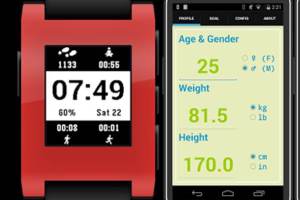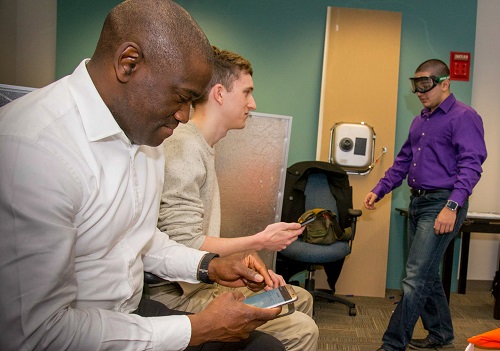 Developer of the popular fitness application is also part of a WPI research team working on a smartwatch application that will improve care for patients with severe diabetes
Developer of the popular fitness application is also part of a WPI research team working on a smartwatch application that will improve care for patients with severe diabetes
It knows when you’re sleeping. It knows when you’re awake—and when you’re sitting, walking, or running.
Called On11, a new fitness and activity tracker available for the Pebble smart watch is currently its 7th most popular watch-face application for the device, with more than 16,000 users across North America, Europe, and Asia. The app was created by Qian He, a computer science doctoral student who works with faculty researchers at WPI on projects that use mobile devices to help people lead healthier lives.
Pebble is a wristwatch digital platform that links wirelessly to the wearer’s smartphone. It made a big splash in 2013 after the most successful Kickstarter fundraising campaign to that point, and has since sold more than 400,000 units. Pebble encourages third-party developers like He to use the platform in creative ways. “I bought my Pebble as a present for myself,” He said. “Over the break, I had some free time, and honestly I was a little bored. So, I just thought, ‘I can do this.’”
A couple of hectic days spent coding for the Pebble platform followed, with He adapting some of the algorithms developed for his graduate work and creating new modules that use the smart watch’s accelerometer for tracking movement.


